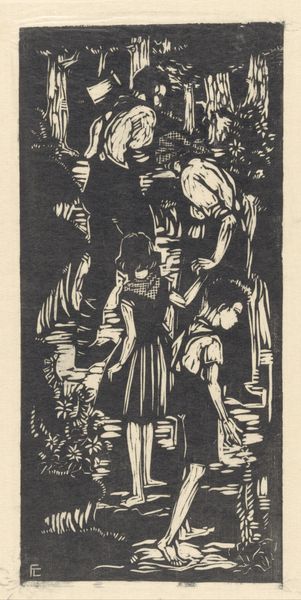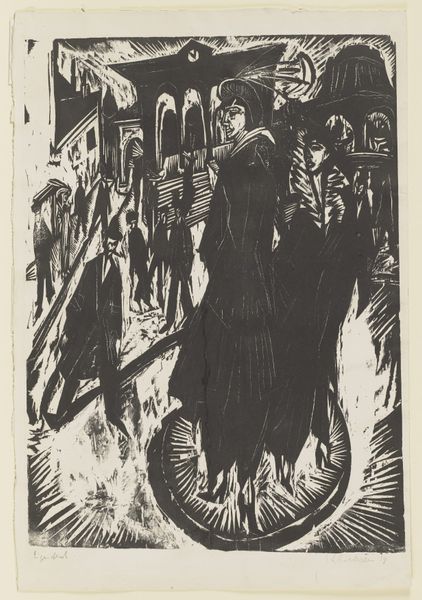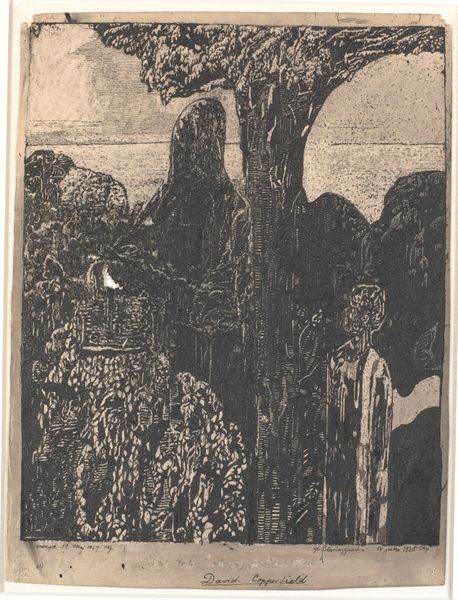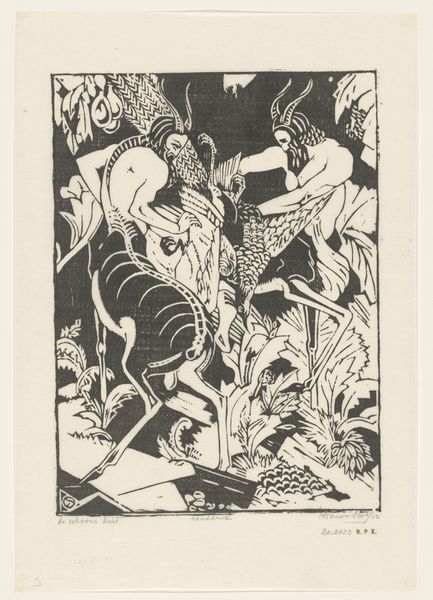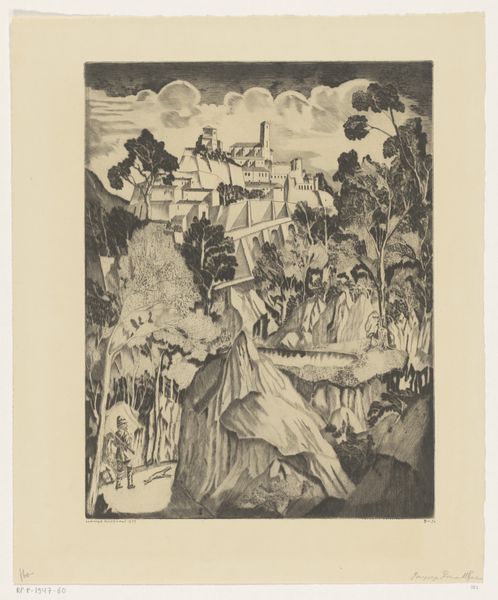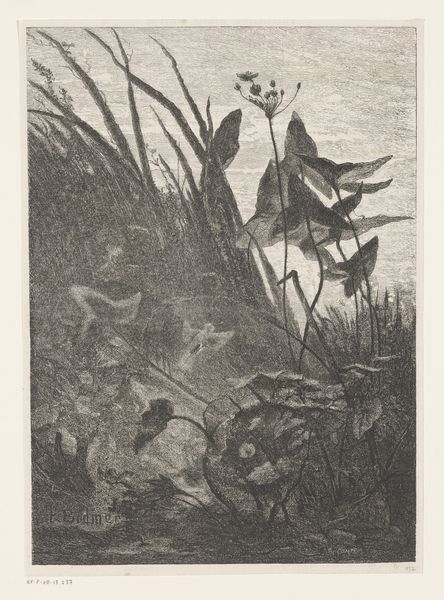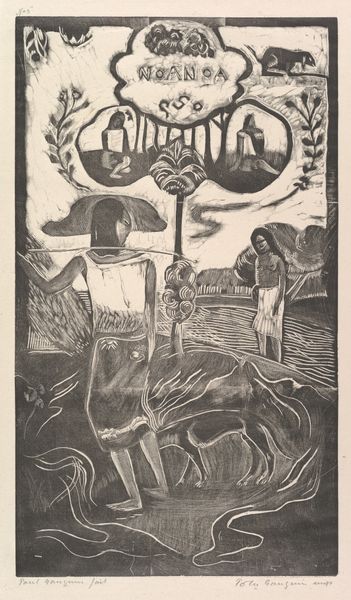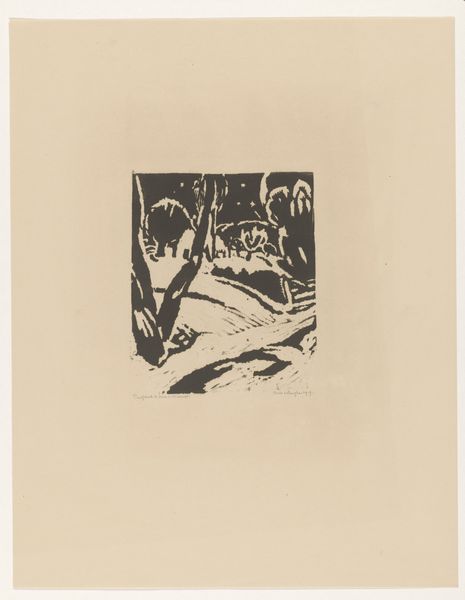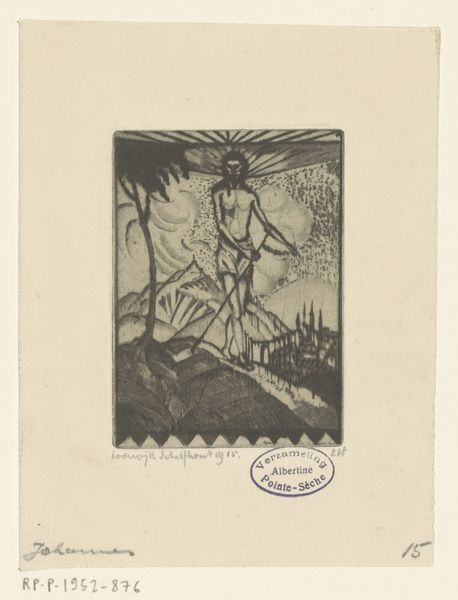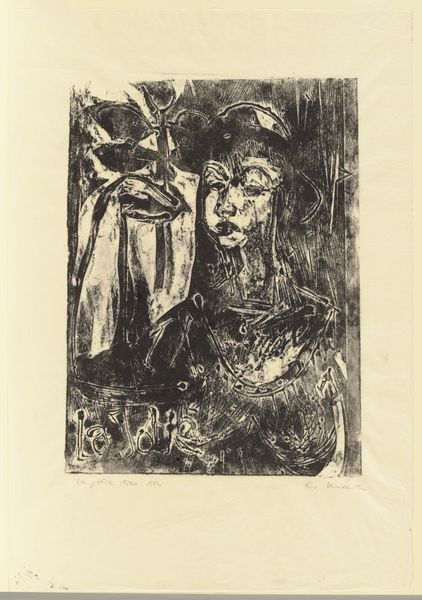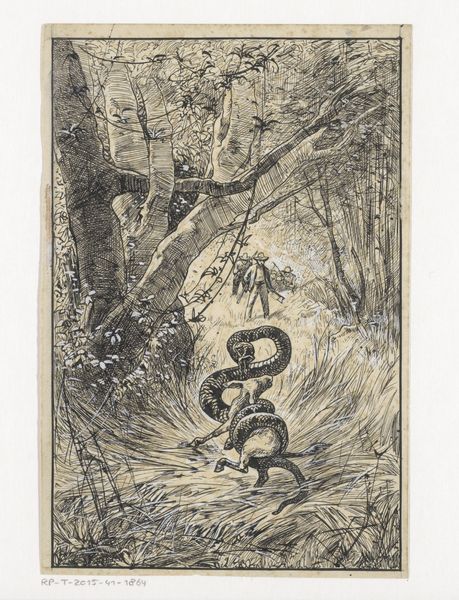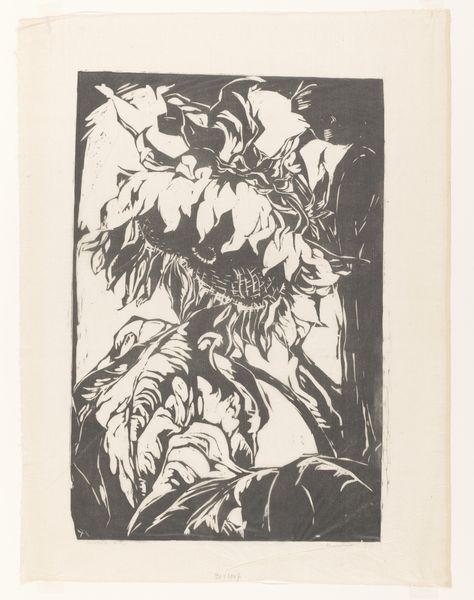
drawing, print, paper, woodblock-print, woodcut
#
drawing
#
art-nouveau
# print
#
caricature
#
cartoon sketch
#
paper
#
linocut print
#
woodblock-print
#
woodcut
#
symbolism
Dimensions: 413 × 283 × 6 mm (closed); 413 × 570 mm (open)
Copyright: Public Domain
Curator: The first impression this work gives is darkness—a very deep contrast between light and shadow that almost overwhelms any clear subject matter. It's Paul Gauguin's woodcut, titled "Noa Noa." Editor: It does pull you in, doesn’t it? I see it as a commentary on colonial encounters, a symbolic landscape loaded with complex power dynamics, perhaps. Curator: Gauguin was a complicated fellow, wasn't he? A searcher. He claimed this work, with its strange juxtapositions and almost clumsy execution, tried to get at something truer, something unspoiled in Tahiti, some hidden spirit of place. It makes me wonder though, if he idealized something to run away from. Editor: Run *to*, perhaps? I would say Gauguin essentialized and appropriated the visual and spiritual cultures of Tahiti, reflecting a male gaze that exoticizes and objectifies the local populations. The figures, especially, seem almost deliberately flattened and reduced. What do you make of the title, "Noa Noa?" It’s Tahitian, right? Curator: "Fragrant Land.” It seems straightforward at first, almost an invitation to paradise, but it also hints at layers beneath the surface. Consider the woodcut itself – it's rough, raw almost, unlike the idealized visions of paradise. A reminder that all things are more complicated. Editor: I am inclined to disagree here. It echoes larger themes, perhaps more insidiously, the history of claiming and naming lands through a Western, colonial perspective. Also, given Gauguin's personal history in Tahiti, his relationships with young Tahitian women, this ‘fragrance’ carries connotations that must be interrogated and condemned. Curator: I can't ignore that, of course. There is a shadow hanging over the work. But, for a moment, put that aside, and consider the work simply as a crafted thing. A carved block, pressed to paper, carrying feelings about somewhere, about what was lost in leaving... It feels a little poignant to me, that reach. It makes one pause. Editor: Poignant and deeply problematic. But isn't that the conundrum when you explore historical works through the looking glass of contemporary scrutiny? Still, grappling with this artwork demands acknowledging Gauguin's complicated legacy as a colonizing, appropriating force. Curator: Right, you have to reconcile that. He aimed for authenticity, and maybe made his own kind of exploitative artifice instead. Maybe we all do that sometimes. Editor: It leaves you wondering, doesn't it? If paradise can even exist if built on someone else's land, culture, and history.
Comments
No comments
Be the first to comment and join the conversation on the ultimate creative platform.
